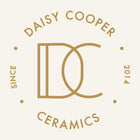Press moulds refer to moulds made by either bisque clay (clay fired to 960-1000℃) or plaster. It is the most effective way for reproducing your work multiple times, and it is easy to use.
The mould is used by lining a slab of fresh clay on it, pressing the clay gently and evenly with your hands, and waiting for the clay to firm up before detaching it from the mould. You will end up with a uniform replication of your mould. You can repeat this process multiple times and get the same shape over and over again, and it saves a whole lot of time and effort.
There are two types of press moulds:
It has a convex form. The slab of clay is laid over the top of the hump and pressed against it. With this type of mould the outside surface of the pot is exposed, while the inside is in contact with the mould.
It has a concave form. The slab of clay is laid inside the mould and pressed against it. With this type of mould the inside surface of the pot is exposed, while the outside is in contact with the mould.
Using a hump mould is convenient when the artist is planning to add a foot, handle or texture to the outer surface of their pot, while they could benefit from using a slump mould if they plan to decorate the inside with underglazes or decals.
Making your own press moulds is extremely easy. Search for tutorials online and give it a try at home. You can make a mould of nearly every object but keep in mind that some might be more complex than others, so start with an easy shape like a bowl or serving plate. If using plaster for making your mould, you can use Plaster of Paris or Pottery Plaster. The difference between the two is that Pottery Plaster is harder so better for moulds that will be used over and over again (they will suffer less wear and tear). However, Plaster of Paris is less expensive and would still endure a fair amount of use. We recommend just using Pottery Plaster, but you could choose either.
There’s also shops that sell already made moulds, which could be a good start if you just want to taste this technique for the first time.
Have a go and enjoy!

